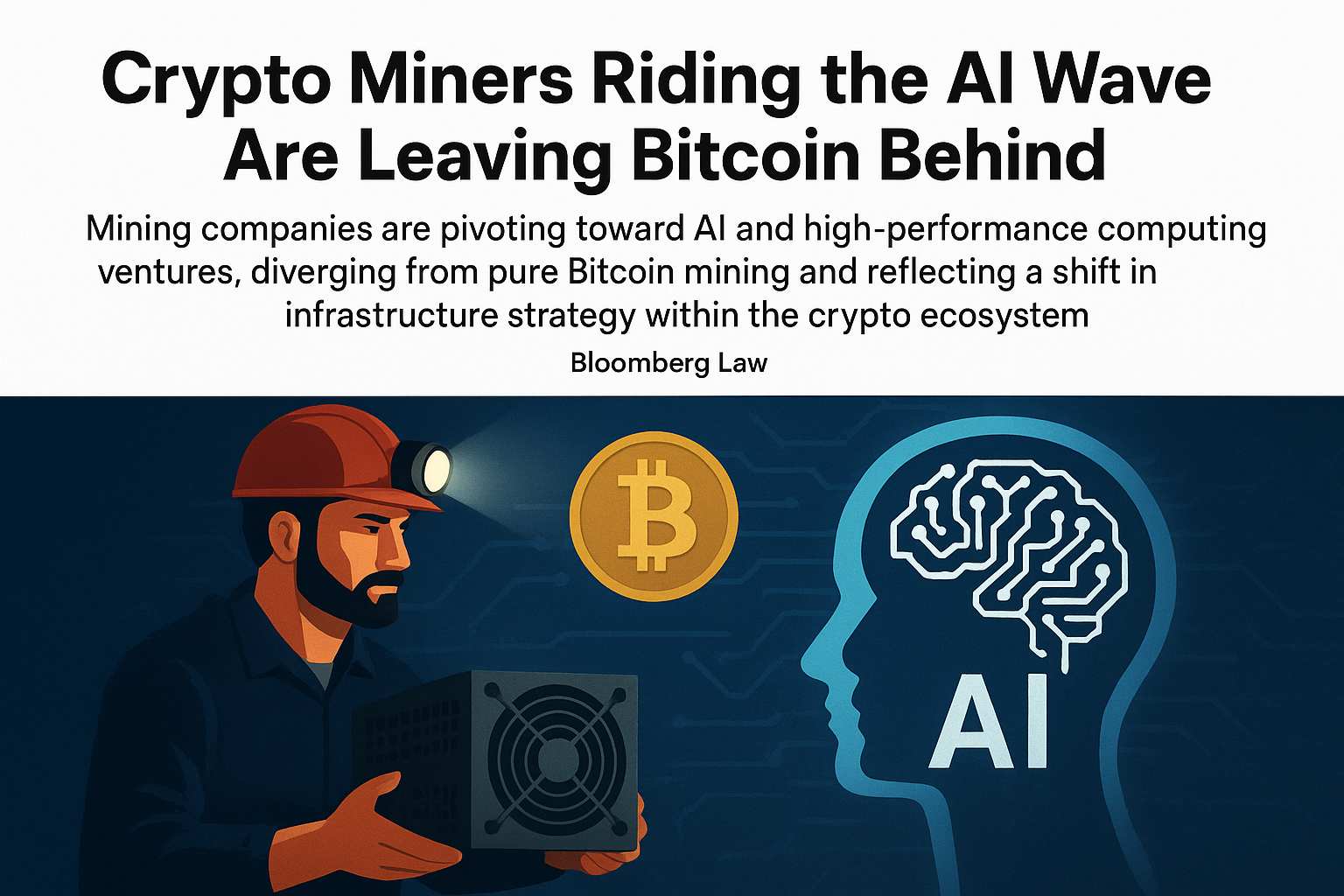In the ever-evolving landscape of digital technology, a fascinating transformation is taking place. Crypto mining companies, once synonymous with Bitcoin and blockchain validation, are increasingly pivoting toward artificial intelligence (AI) and high-performance computing (HPC). This shift marks a major turning point in how mining firms view their infrastructure, profitability, and long-term sustainability.
For over a decade, Bitcoin mining has been the beating heart of the cryptocurrency ecosystem — a highly competitive race to validate transactions and earn block rewards. But as Bitcoin’s mining difficulty continues to climb, energy costs surge, and block rewards halve every four years, traditional miners are finding their business models under immense pressure. The result? A growing number of companies are repurposing their massive data centers to serve the booming AI industry.
From Bitcoin Hashes to Neural Networks
Bitcoin mining farms are already optimized for intense computational workloads — equipped with powerful GPUs, ASICs, and energy-efficient cooling systems. These same capabilities make them ideal candidates for AI workloads such as model training, machine learning inference, and data analysis.
Instead of solving cryptographic puzzles, miners are now renting out computing power to train large language models or process data for AI-driven companies. It’s a shift from pure crypto speculation to tangible utility — and one that is proving to be far more profitable in many cases.
For instance, major players like Hut 8, Core Scientific, and Iris Energy have all begun diversifying into AI and cloud computing. Core Scientific, once struggling through the crypto winter, is now providing infrastructure for AI and enterprise customers, turning what was once a volatile business into a more stable revenue stream.
A Strategic Realignment
This trend represents more than just a search for profit — it’s a strategic realignment in how companies perceive digital infrastructure. Mining facilities are no longer just “crypto farms”; they are becoming multipurpose data centers capable of supporting the next wave of digital innovation.
AI workloads, unlike Bitcoin mining, generate recurring income through client contracts rather than relying on volatile token prices. This means miners can better manage their operational risk while still leveraging their most valuable asset — computing power.
The Ripple Effect on the Crypto Ecosystem
As miners pivot toward AI, the ripple effects are being felt across the entire crypto landscape. On one hand, Bitcoin’s network hash rate may stabilize or even decline slightly as computing resources are diverted elsewhere. On the other hand, this transition could lead to a more sustainable mining industry, one that is less dependent on speculative cycles and more integrated into the broader tech economy.
Moreover, this shift underscores the deep interconnection between blockchain and AI — two technologies often viewed as separate revolutions. Mining companies are proving that the physical backbone of one (crypto) can fuel the digital intelligence of the other (AI).
The Future of Mining Is Intelligent
What began as a survival tactic during the crypto bear market may soon become the new normal. As AI continues to dominate global innovation and data processing demands skyrocket, miners who adapt early stand to benefit enormously.
Bitcoin will always remain the cornerstone of the crypto economy, but its miners may no longer be defined by it. Instead, they are evolving into a new kind of infrastructure provider — one that powers not only decentralized networks but also the algorithms shaping the future of humanity.




